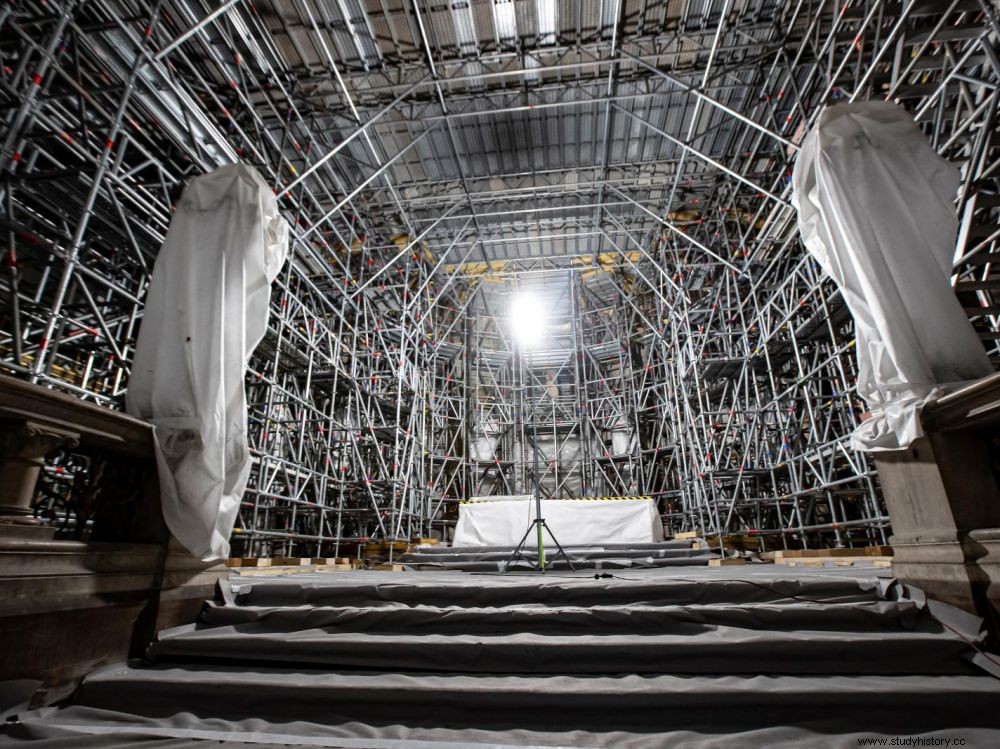The Ministry of Culture announced that many graves, including an enigmatic lead sarcophagus, had been discovered during preventive excavations under the paving of the Parisian cathedral. The operation also revealed "the existence of a pit in which polychrome sculpted elements were buried ".

A photo taken July 12, 2021. Several tombs, including a lead sarcophagus probably dating from the 14th century, were discovered during an archaeological dig prior to the reconstruction of the spire.
 Important archaeological discoveries made under Notre-Dame, including a lead sarcophagus Sciences et Avenir 00:00 / 00:00 Your browser does not support the
Important archaeological discoveries made under Notre-Dame, including a lead sarcophagus Sciences et Avenir 00:00 / 00:00 Your browser does not support the audio element. "The cathedral is still full of unexplored places", assured us more than two years ago Didier Busson, former archaeologist of the city of Paris specialist in the origins of the French capital, convinced that if excavations were undertaken under Notre-Dame, one would find treasures there. Didier Busson was right.
Anthropomorphic lead sarcophagus discovered
Several burials, including a lead sarcophagus probably dating from the 14th century, were discovered during an operation of archaeological excavations prior to the reconstruction work of the spire of Notre-Dame de Paris cathedral, announced on Monday March 14, 2022 the Ministry of Culture. The excavations, which began on February 2, 2022, are being carried out by the National Institute for Preventive Archaeological Research (INRAP) and were commissioned by the DRAC Île-de-France (regional archaeological service).
Found with others under a stone slab of the cathedral, the "anthropomorphic lead sarcophagus, fully preserved" , could be that "of a high dignitary, probably from the 14th century" , states a source in the press release from the ministry. The operation also brought to light, immediately below the current paving level of the cathedral, "the existence of a pit in which were buried polychrome sculpted elements identified as belonging to the former rood screen of Notre -Dame, built around 1230 and destroyed at the beginning of the 18th century". A rood screen is a gallery forming a stone or wooden fence separating the liturgical choir from the nave.
"A discovery of the greatest interest"
During his work in the middle of the 19th century, Viollet-le-Duc had found other fragments belonging to this rood screen, now on display in the Louvre Museum."It is therefore a discovery of the greatest great interest, likely to provide new data on this rood screen and on the quality of its painted decoration ", adds the Ministry of Culture. Preventative excavations will continue until at least March 25.
